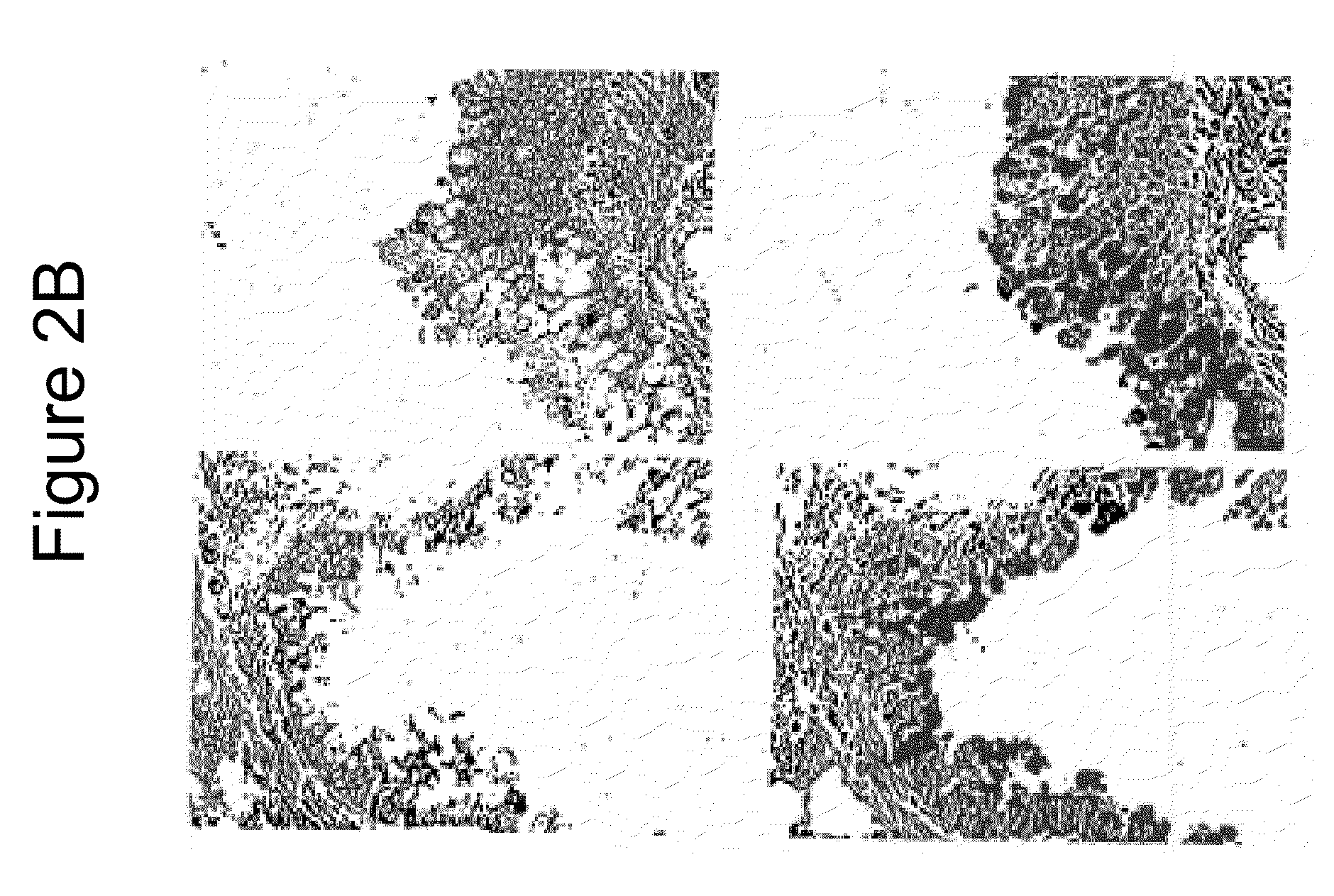Epha2 and hyperproliferative cell disorders
a technology of epithelial cells and endothelial cells, applied in the field of epithelial and endothelial cells that are hyperproliferative, can solve the problems of copd, significant cause of death and disability, mucosal inflammation, etc., and achieve the effect of increasing epha2 activity
- Summary
- Abstract
- Description
- Claims
- Application Information
AI Technical Summary
Benefits of technology
Problems solved by technology
Method used
Image
Examples
Embodiment Construction
[0087]EGF was previously known to be associated with hyperproliferative epithelial cell disorders, particularly asthma and COPD (i.e., by increasing proliferation and mucin secretion of airway epithelial cells) and hyperproliferative endothelial cell disorders, particularly restenosis (i.e., by increasing neointimal hyperplasia). The present invention is based, in part, on the inventors' discovery that EGF also causes an increase in EphA2expression. Without being bound by a particular mechanism, EGF causes the increased expression of EphA2 thereby increasing EphA2 activity which causes the cell phenotypes associated with non-neoplastic hyperproliferative cell or excessive cell accumulation disorders, particularly those characterized by hyperproliferating epithelial or endothelial cells or hyperproliferating fiboblasts.
[0088]Reduction of this elevated EphA2 expression and / or activity (other than autophosphorylation) may ameliorate symptoms associated with a non-neoplastic hyperprolif...
PUM
| Property | Measurement | Unit |
|---|---|---|
| distance | aaaaa | aaaaa |
| pH | aaaaa | aaaaa |
| diameter | aaaaa | aaaaa |
Abstract
Description
Claims
Application Information
 Login to View More
Login to View More - R&D
- Intellectual Property
- Life Sciences
- Materials
- Tech Scout
- Unparalleled Data Quality
- Higher Quality Content
- 60% Fewer Hallucinations
Browse by: Latest US Patents, China's latest patents, Technical Efficacy Thesaurus, Application Domain, Technology Topic, Popular Technical Reports.
© 2025 PatSnap. All rights reserved.Legal|Privacy policy|Modern Slavery Act Transparency Statement|Sitemap|About US| Contact US: help@patsnap.com



